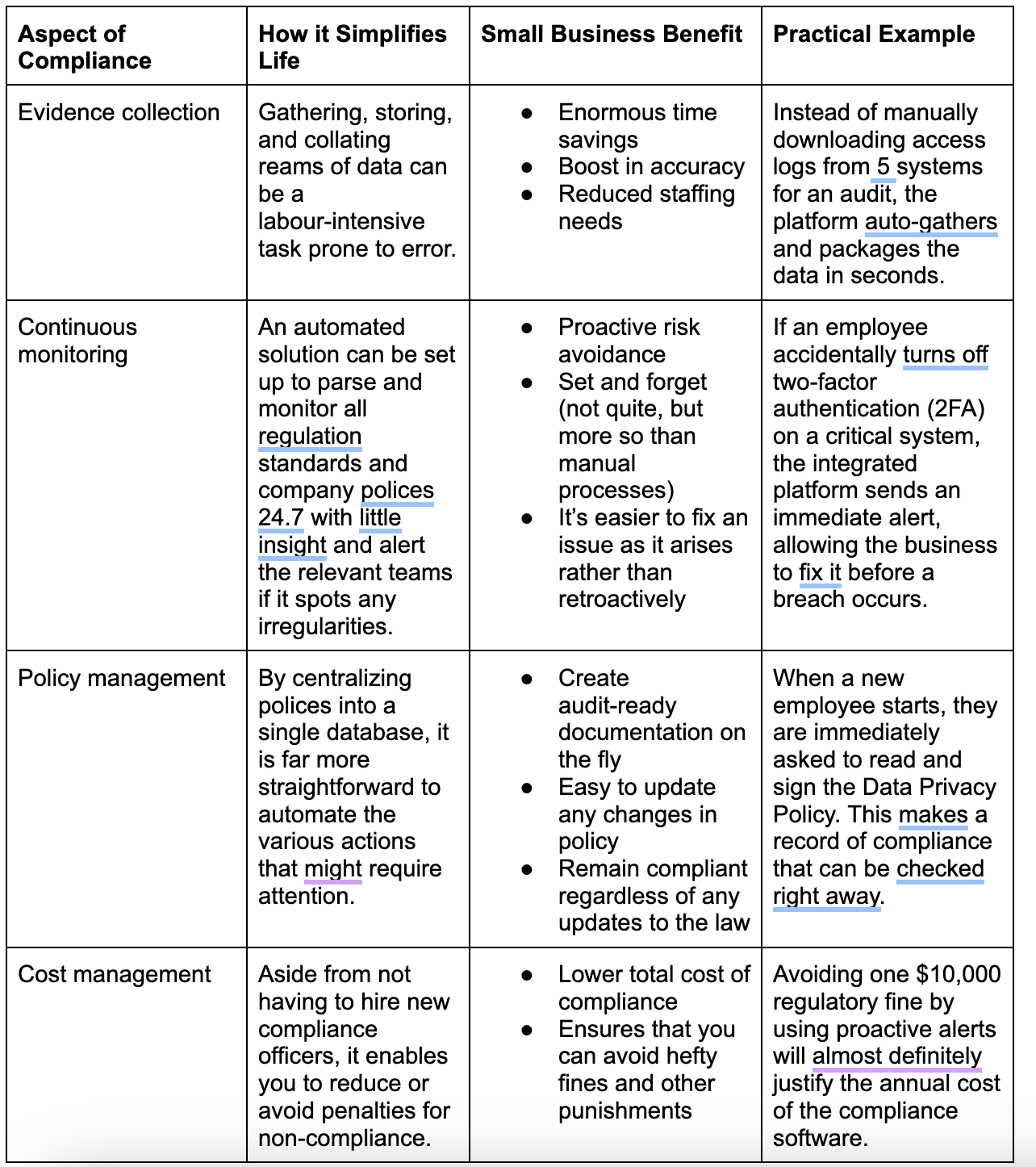Compliance Challenges Simplified Through Business Process Automation
ByJulian Gette
Workast publisher

Workast publisher
Imagine you’re a business juggling a myriad of orders, trying to manage your inventory and attempting to hire new staff, and more, all while trying to figure out how a new data privacy law might impact you, let alone what you actually need to do in order to remain on the right side of the law. It’s not always pretty being a business owner, but the facts are the facts, and without paying attention to the web of laws, regulations, and social trends of the day, you could find yourself with a hefty fine courtesy of the taxman (or worse, depending on how badly you mess things up).
But with great challenges often come amazing people who have decided to create solutions that help the little guy traverse these matters. Compliance isn’t the sort of thing that most companies want to spend time thinking about, but by automating the processes involved, it’s possible to sidestep the challenges and enable you to keep your eye on what matters most for you and your employees… creating fantastic products or services and finding the customers who can benefit from them.
Any businesspeople reading this won’t need too much of an introduction to the challenges they face regularly vis-a-vis compliance, but for those on the outside, or those just at the start of their entrepreneurial journeys, it pays to dig into the main challenges that can afflict you if not dealt with effectively. For instance, according to the attorneys over at https://ltlaw.com, if you are a manufacturer of a product, the ball is in your court to ensure that all precautions are taken to produce a product that won’t harm the end user.
The same is true whether you’re manufacturing boxes to be used in the removal business or offering consulting services to local businesses. Whatever product or service you sell, it must comply with the regulations governing that particular industry and product. While many of these compliance regulations will vary depending on industry, there are a few that remain constant, such as:
Data privacy and security: Data privacy is a big one and affects all industries, regardless of what they offer. It extends from your employees to your customers, and can involve a huge amount of work to get right. There is also the issue that data laws tend to wax and wane over time, meaning that you have to stay up to date if you want to remain legal.
Financial reporting and taxes: Business can be forgiven for many things, but the one department of state that never forgets and never forgives is the all-seeing, all-knowing IRS. Failing to improve accuracy in this department will almost certainly result in some form of pain, either by way of a fine or drawn-out audit.
Employee-related compliance: According to QuickBooks, 44% of small business owners struggle with timesheet errors. That is actually massive, and the result isn’t merely disgruntled employees. It can lead to litigation and all manner of horrible outcomes further down the line if you fail to improve your systems.
It’s fair to say that most small and medium-sized businesses don't want to break the rules on purpose, but they tend to do so because they don't know what they're doing, don't have the right tools, or for other non-malicious reasons. Still, without the right tools at their disposal, they will make the sorts of mistakes that can cost them dearly and, in the worst-case scenarios, may even lead to bankruptcy. There are numerous ways in which automation can help to clear these problems:
It’s one thing to read about the benefits, but another thing entirely to understand how you might implement an automated system into your business. The following points are broad suggestions and your mileage may vary based on your specific needs, but they are good stepping-off points nonetheless:
Choose and set up the tools specific to your company
Automate the workflows that are sensitive to regulation and compliance
Monitor and refine as needed
Once you have things set up, you will need to pay particular attention to how they‘re operating so that you avoid any issues that might arise. You should never fully allow your automated processes to have full control over everything without regular oversight.
As you have read, there are plenty of ways that implementing some form of business process automation can help you shift focus away from worrying about the necessary but often tiresome and laborious task of remaining compliant, and toward doing business. As long as you choose a system that integrates with your existing software stack and falls within your cost and scope requirements, you will free up inordinate amounts of time and enjoy the advantages that come from automation.



